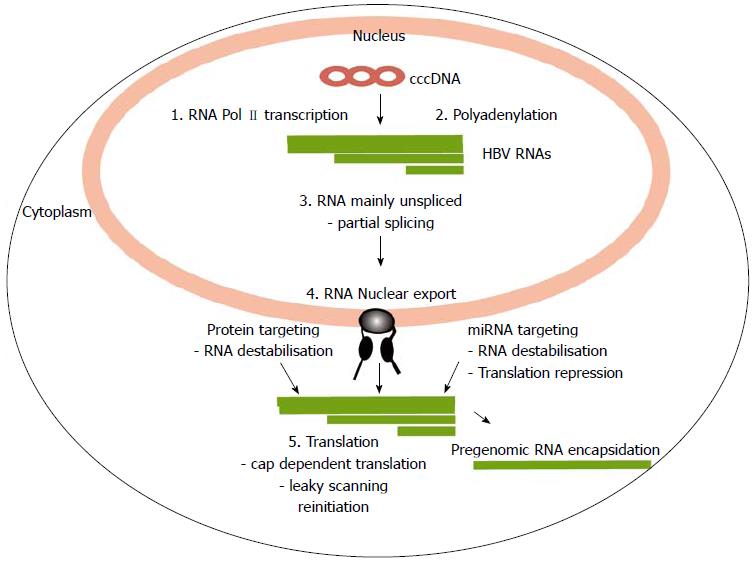Copyright
©2014 Baishideng Publishing Group Inc.
World J Gastroenterol. Jul 7, 2014; 20(25): 7993-8004
Published online Jul 7, 2014. doi: 10.3748/wjg.v20.i25.7993
Published online Jul 7, 2014. doi: 10.3748/wjg.v20.i25.7993
Figure 1 Overview of the steps of post-transcriptional processing and translation of hepatitis B virus RNAs.
The circular hepatitis B virus (HBV) genome is represented as the closed circular DNA (cccDNA). It encodes four large overlapping open reading frames encoding the core (C), surface (S), polymerase (P) and X proteins. It is transcribed into four main transcripts (HBV RNAs) with common polyadenylation sites and 3’ ends. Sites in which the virus uses processes that differ from the host are indicated and reviewed in the text (1) Transcription at specific viral promoters; (2) Non-canonical polyadenylation; (3) Partial splicing; (4) Nuclear export; and (5) Translation by leaky scanning and reinitiation.
- Citation: Chen A, T-Thienprasert NP, Brown CM. Prospects for inhibiting the post-transcriptional regulation of gene expression in hepatitis B virus. World J Gastroenterol 2014; 20(25): 7993-8004
- URL: https://www.wjgnet.com/1007-9327/full/v20/i25/7993.htm
- DOI: https://dx.doi.org/10.3748/wjg.v20.i25.7993









